Exploring the Remote and Rugged Magdalen Islands of Canada
Fresh Air, Food, Culture, and Adventures Galore in Les Iles de la Madeleine
Article and photos by Lies Ouwerkerk
Senior Contributing Editor
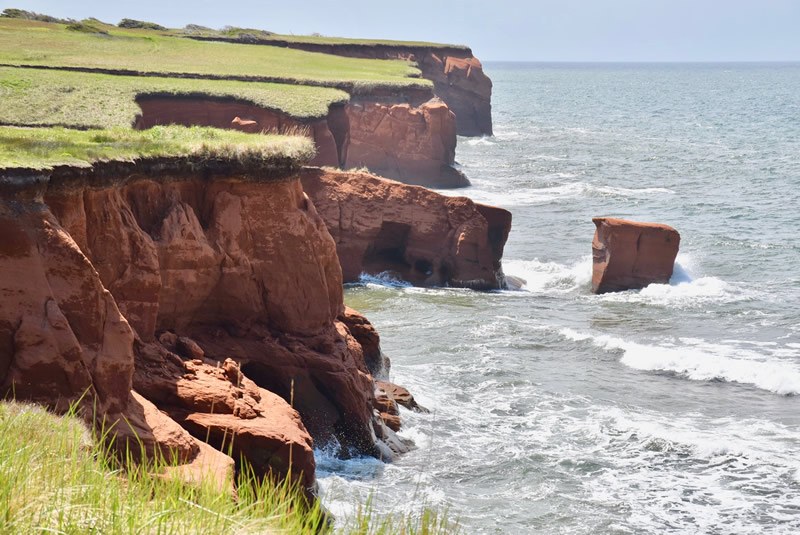 |
| Magdalen Islands' coves and caves in the red sandstone cliffs can be explored by kayak. |
“Remember not to park too close to other vehicles,” warns the friendly woman at the car rental desk in the tiny airport of Cap-aux-Meules more than once. As experienced drivers, we have a good chuckle about her advice once we are on our way to the charming B&B "La Maison des Falaises", overlooking the lighthouse and sandstone cliffs of Cap Allright. But a few minutes later, while opening the car door at the destination, a wind gust forcefully snatches the door handle out of my hand. I finally get it!
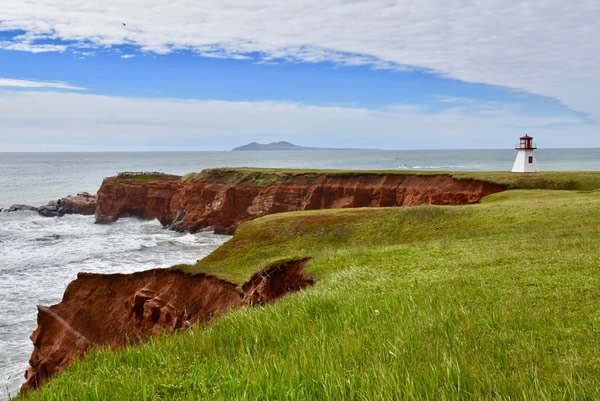 |
| Cap Allright with one of the Islands' 6 working lighthouses. |
The archipelago of 12 wind-swept islands — seven of which are permanently inhabited by about 13,000 Madelinots, as the people of Les Iles de la Madeleine are called — belongs to the Canadian province of Québec. The islands are situated northeast of Prince Edward Island and Nova Scotia in the middle of the Gulf of the St. Lawrence. Once upon a time, the Basque, French, and English competed around these islands for the hegemony of sea cow (walrus) hunting, until the marine mammal disappeared completely from the area at the end of the 18th century due to overhunting.
Most Magdalen Islanders are descendants of Acadians (early settlers from France), indigenous Mi’kmaq, wandering merchants from the mainland, immigrants from England, Scotland and Ireland, and survivors of the many shipwrecks that occurred around the Islands in times lighthouses were still few and far between.
French is by far the most important language on the Islands, but a few predominantly English-speaking clusters have remained, in particular on Grosse-Ile.
Islanders live in simple, brightly colored, cedar wood-shingled houses scattered over the stringy archipelago that resembles a fishhook. Pine forests, beaches, dunes, and cliffs alternate with grasses, wetlands, and cropland.
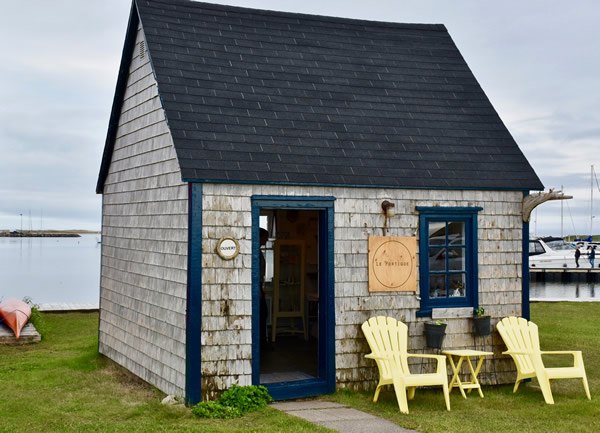 |
| Typical dwelling in the Magdalen Islands. |
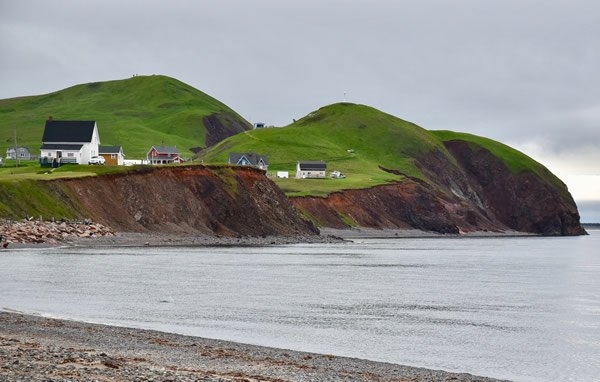 |
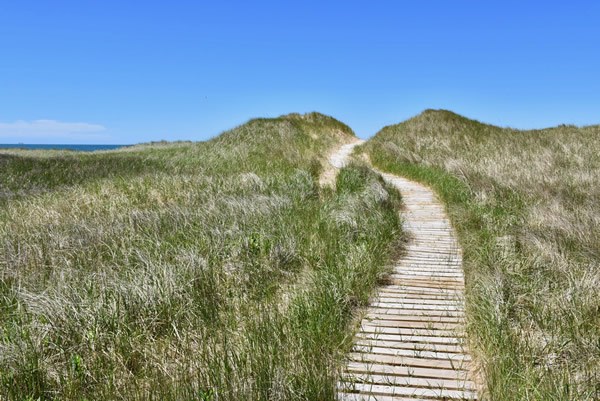 |
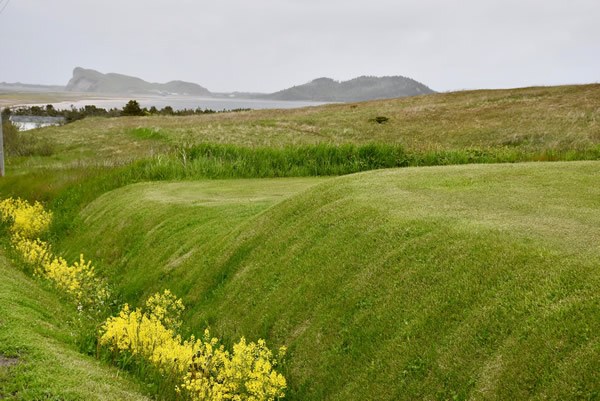 |
| Magdalen Islands' scenery. |
Fishery
The fishing industry is the principal source of income for the Islanders and nowadays concentrates mainly on lobster. The season runs for only nine weeks a year, from early May until late June, and is strictly regulated. There are about 325 fishing licenses, and each boat sets the same number of lobster traps. Spawning females and undersized lobsters are freed if caught. The industry received an eco-certification in 2013, which demonstrates how seriously Madelinot fishers take their environment.
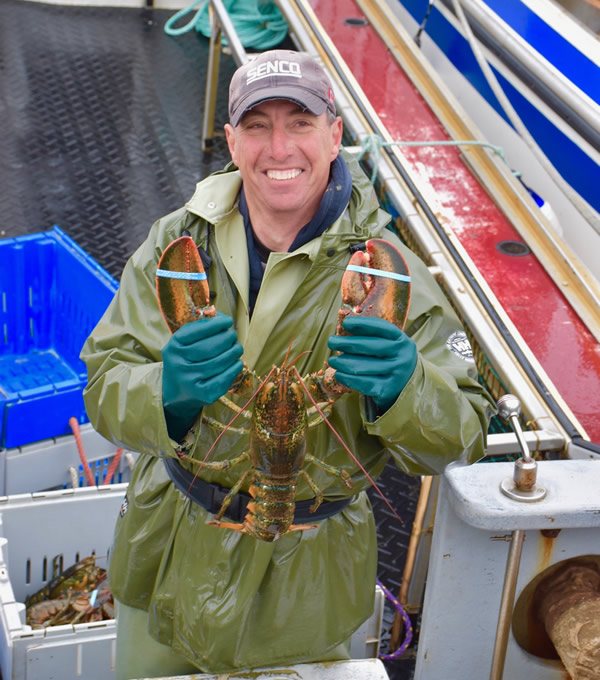 |
| Fisherman with his catch of the day. |
Fishers typically set out for sea in the early morning, as they are allowed to lift their traps at sea as early as 5:00 AM. Once lobsters are caught in the traps, they are taken out and transferred to the boats’ storage spaces. The traps are re-baited and put back in the water for the next day. The fishers return to their harbor around 11 AM, and quickly sort and unload their catch of the day, still alive, into containers, which are then rapidly sent off. Most lobsters from the Magdalen Islands — widely known for their delicate flesh — are sold to foreign markets.
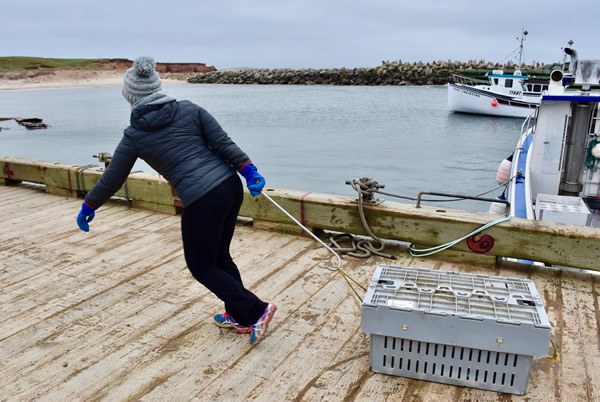 |
| Containers with fresh lobsters are rushed away. |
Other sea harvests of importance include mussels, clams, mackerel, Atlantic halibut, snow crab, and scallops.
In the past, herring was the mainstay of Madelinot fisheries. The fish was used as bait in lobster traps, eaten fresh, or destined for export — salted or smoked. The local smoking industry flourished in the first half of the 20th century until a drastic drop in stock and demand ended most of the smokehouse activities on the islands. The only surviving hard-smoking operation where fish is still smoked in the traditional step-by-step way is Le Fumoir d’Antan on Iles du Havre-aux-Maisons (open to visitors).
Learning the Art of Preparing Scallops
One of the highlights of our stay on the Islands is a scallop workshop offered by Gourmande de Nature, the brainchild of Johanne Vigneau, the talented chef and owner of prestigious restaurant La Table du Roy on Ile Cap-aux-Meules. Her new venture in the village of L’Étang-du-Nord houses the ultramodern workshop area where we are welcomed. The premises also feature an amazing kitchen boutique offering anything from cookbooks to exotic condiments and kitchenware, as well as a glassed-in production kitchen where intriguing concoctions are conjured up straight from the natural wealth of the islands (i.e., cantharel salt, lavender sugar, eglantine butter, and black currant coulis).
During the 3-hour workshop, Johanne and her colleague Evangeline Gaudet teach our group of 16 people — islanders and visitors alike — about scallops. They explain what the scallop actually consists of (the adductor muscle that holds the two halves of a shell together), what types can be found here (the delicate Princess scallop and larger varieties), how to dislodge the muscle with a small knife, how to dry, cook or grill the scallop (quickly, at high heat), or eat raw. Suggestions are made for sauces as accompaniments, and we are taught various preparations: a pesto of wild greens and raspberry vinegar, a cream of coconut milk, garlic, coriander and lime, or a sauce of chorizo, leak, wine, and shallots. In the end, we devour everything with much gusto, with a cool glass of white wine on the side.
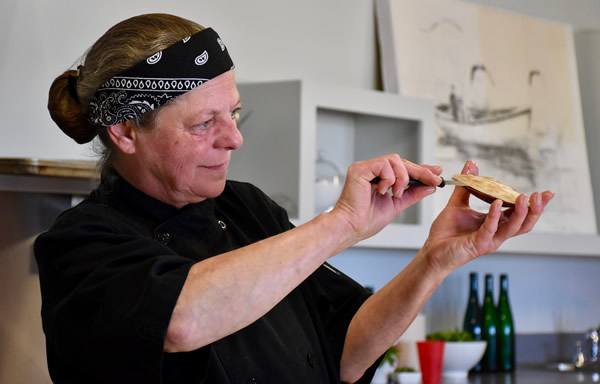 |
| Evangelina Gaudet shows how to dislodge the scallop from the shell. |
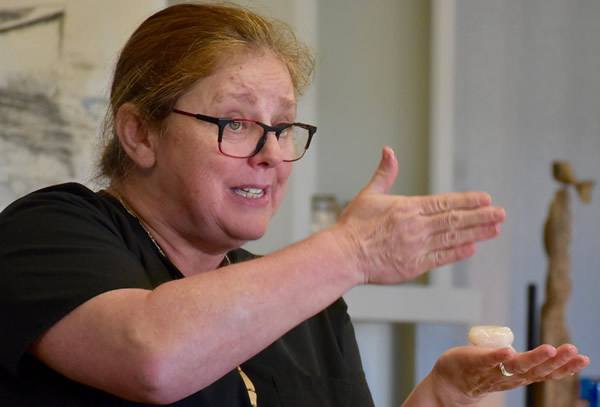 |
| Johanne Vigneau instructs how to slice a raw scallop. |
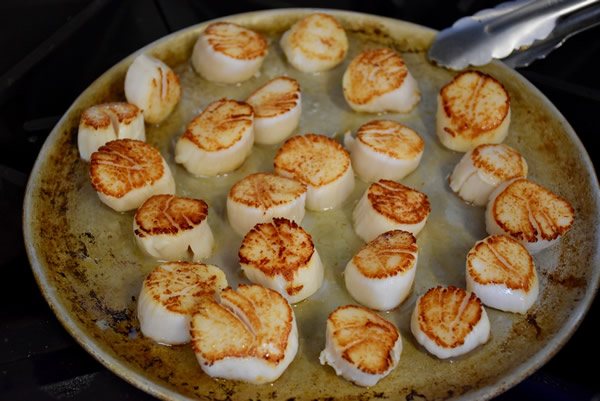 |
| Seared scallops. |
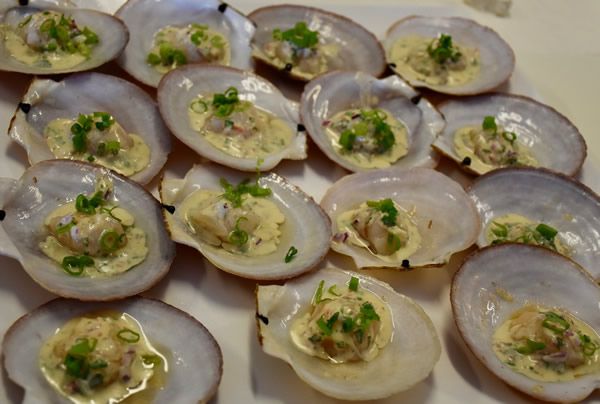 |
| Cooked scallops. |
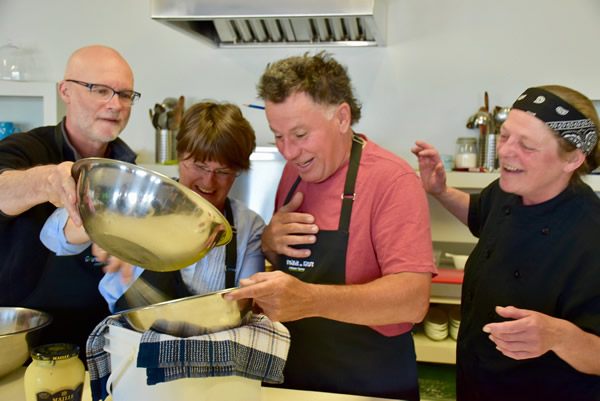 |
| Students preparing sauce during the scallop workshop of "Gourmande de Nature." |
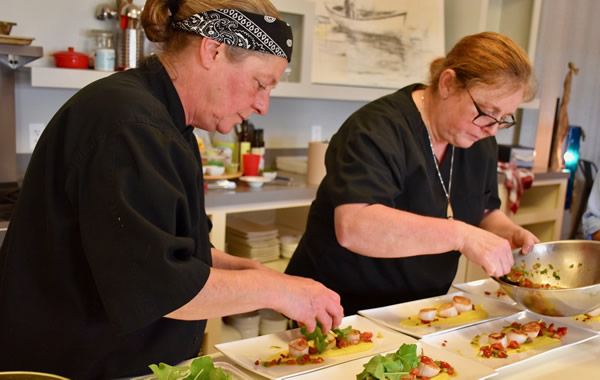 |
| Workshop teachers Johanne Vigneault and Evangeline Gaudet in action. |
Other workshops offered by Gourmande de Nature include: "Culinary traditions of the Madelinots", "Tributes to my sea: fish and shellfish recipes", and "We pinch for lobster", as well as seaside and forest strolls to scavenge for unusual edible parts of the Islands’ nature.
Interpretations of the Sea
Although discovering the many excellent cafés and restaurants offering fish and seafood (including La Table du Roy, Café de la Grave, Vent du Large, Quai 360, Café La Côte, Aux Pas Perdus, Domaine du Vieux Couvent, and Bistro Plongée Alpha) is one of the most memorable parts of a stay on the islands, there are many other areas in which the sea and all its aspects are central. You will see works by local artists such as the glassblowers of "La Méduse", ceramist Patrick LeBlond, whose pottery is also displayed in the Montreal Museum of Fine Arts, and Julien Livernois, who turns photographs of boat hulls into fantastic collages on wood. Other highlights include museum exhibits related to the sea; science trips along the beach to learn about the tides; or presentations about deep sea diving and filming underwater.
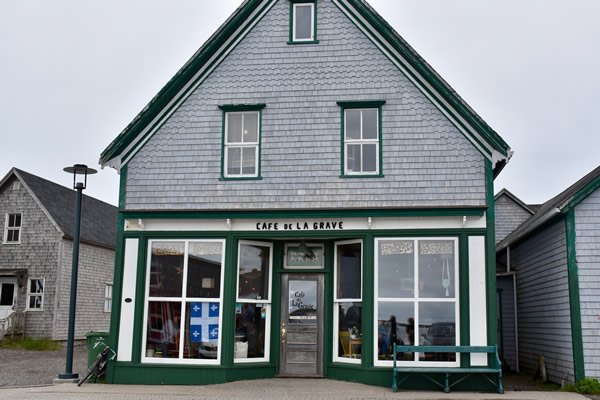 |
| Iconic "Café de la Grave", formerly a general store in the harbor town of La Grave. |
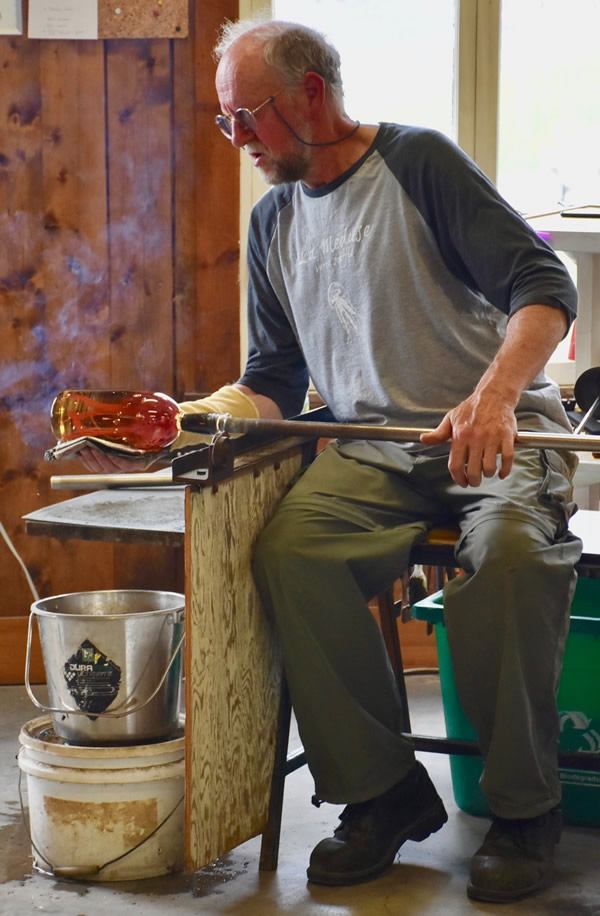 |
| Glass blower of gallerie "La Méduse" in action. |
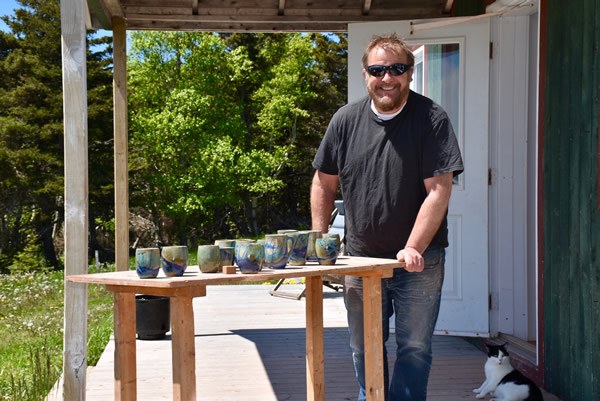 |
| Ceramist Patrick LeBlond at this atelier. |
Econo-museums on the Islands include the Seal Interpretive Centre, the Interpretation Centre for Mariculture to learn about the various shellfish culture techniques, the Sand Museum where we watch sand from the Islands’ shores transformed into sculptures and practical objects by talented local artisans, and the Museum of the Sea, which teaches us about life and its hardships on the Islands in past centuries.
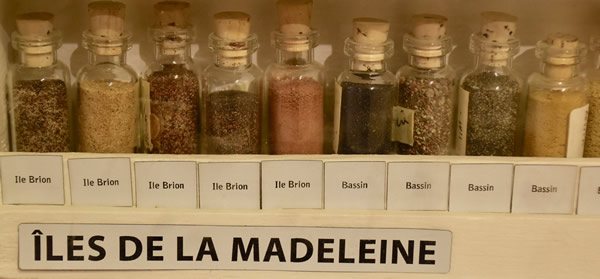 |
| Different types of sand from the Islands, displayed in the Sand Museum. |
In the latter, the skeleton of a sperm whale, which ran aground on a northern beach of the Islands in 2008, is hanging from the ceiling in the entrance hall. It took years to break up the carcass, clean the bones, and reassemble the 215 pieces.
A replica of a molasses barrel, elsewhere in the museum, reminds us of past winters on the Islands when it was too dangerous for boats to sail because of moving ice, and Islanders had to come up with more creative ways to end their complete isolation. In 1910, letters were placed in such a barrel, to which a rudder and small sail were attached. A week later, the “Winter Magdalen Mail” washed up on the shores of Nova Scotia. That event soon prompted the Federal Government of Canada to install a Marconi wireless telegraph station on the Islands.
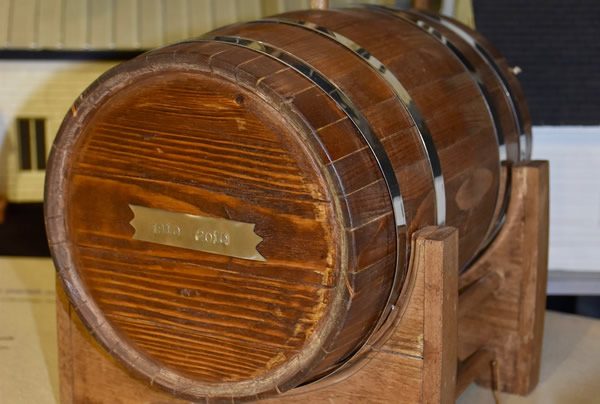 |
| Once upon a time, a molasses barrel was used to transport mail by sea in barren wintertime. |
In the same museum, two temporary exhibits are on display: one of works by the late painter René Lemay, in which maritime life around the Magdalen Islands plays a central role, the other a photo exhibition by local filmmaker and deep-sea and ice diver Mario Cyr. A few days later, we manage to get hold of tickets to Cyr’s fascinating talk about his many polar expeditions and experiences underwater, filming swimming polar bears, giant walruses, and even a white shark giving birth.
 |
| A painting depicting rescuers of a whale ran ashore by René Lemay. |
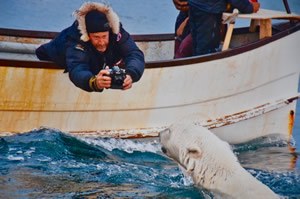 |
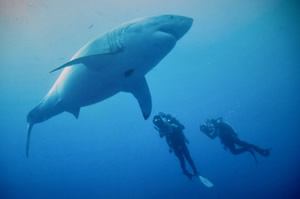 |
| Deep sea diver and cineast Mario Cyr in action. Photos courtesy of Mario Cyr. |
In the small wooden St. Peter’s by-the-Sea Church on Grosse Ile, a permanent exhibition called "People of the Sea" lines the walls of this more than 100 years old building with 120 black & white photographs depicting those who perished at sea during the 20th century, mostly after 1950. There are also some plaques with accounts of the various shipwrecks in the past.
Products of the Land
Not everything is about sea, fish, and crustaceans on the Magdalen Islands, however.
"Fromagerie Du Pied-de-Vent" on Havre-aux-Maisons produces an excellent semi-soft cheese made from the milk of Canadian cattle, fed with hay from the land of the Islands. The typical island grasses, cooler climate, and sea spray all contribute to the unique flavor of the milk they produce.
Cheese molding demonstrations take place in their Interpretation Centre (where we also buy a baguette and cheese for an impromptu picnic on the beach). At their dairy farm nearby we learn more about their daily activities centered around their Canadian breed, imported from the mainland to the Islands in 1998, after a 22 hrs-long trip by land and sea — a first in the archipelago’s history.
"Micro-fromagerie Les Biquettes a l’Air" on Bassin Island is the only farm on the Magdalen Islands with livestock consisting in around 40 free-range goats whose milk is transformed into cheese, feta, and a delicious yogurt-like cream. They offer visits to the farm as well as strolls with the goats along the beach.
"Honey on the Sea" is an organic beekeeping company, situated in the beautiful rolling hills of Havre-aux-Maisons, producing not only honey, but also honey-covered local cranberries, a port-like honey wine, and candles made with 100% bee wax. Wearing a protective suit, you can see the bees in action inside a glass hive, or you can take a workshop in candle making.
We try several other locally made alcoholic brews and liquors. "Le Barbocheux" (literally meaning to go from one house to the other for a little drink, or bagosse, for long the only alcoholic drink on the islands) produces artisanal beverages such as blueberry and cranberry wine, cranberry and dandelion wine, and raspberry liquor. A tasting of four bagosses comes to just a couple of dollars.
Tastings are also possible at "Le Verger Poméloi",an artisanal cider-house in the middle of the woods of Cap-aux-Meules, next to the apple orchard of the owner. Enjoy a visit to the relatively new vineyard "Le Domaine des Salanges", where they produce red wine from a grape without chemicals. Check out "A l’Abri de la Tempête", a micro-brasserie founded by two female Islanders, and located in a former fish processing factory. The latter includes an interpretation center, pub, boutique, and a lovely terrace where we enjoy a magnificent view of West Beach — once the only “road” between Havre Aubert and Cap-aux-Meules during low tides.
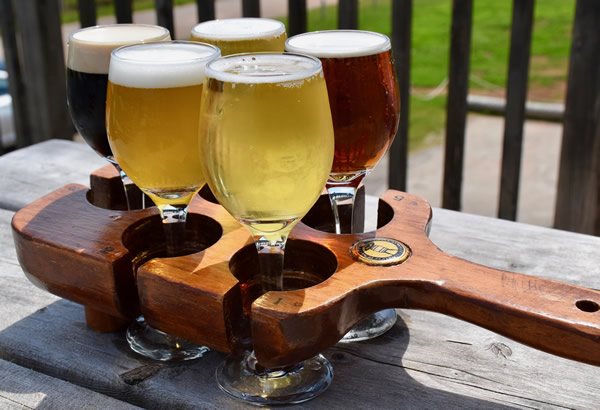 |
| Beer tasting on the terrace of micro-brasserie "A l'Abri de la Tempête." |
Last but not least, there are many local bakeries and pastry shops on the islands, including "Boulangerie Grand-Maman", "L’Arbre à Pains", "Boulangerie Fleur de Sable", and "Hélène des Iles", offering a variety of daily fresh bread and pastries to-die-for.
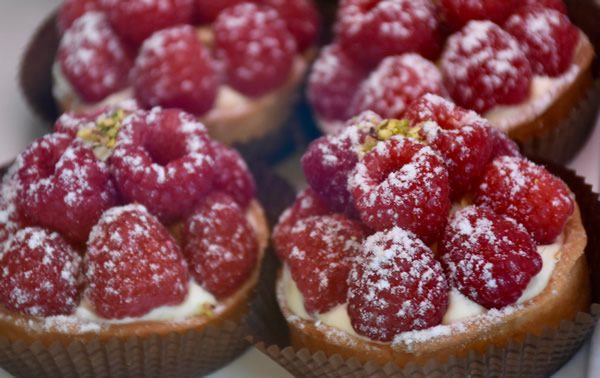 |
| Raspberry tarts from the patisserie "Hélène des Iles." |
Outdoor Activities
Enjoying the various local delicacies would seem to call for a good workout! With 300 kilometers (180 miles) of crescent-formed sand beaches and 13 different natural paths (check out "Sentiers entre Vents et Marées") all over the island, it is not difficult to catch a breath of fresh air on foot.
There are no proper bike lanes on the Islands, but there is a network of scenic secondary roads. You can also bike on the shoulder of route 199, the main road that runs through the Islands. Bikes can be rented at Le Pédalier and Éco-vélo des Îles. Remember, though, that it’s windy on the Islands!
Parc de Gros-Cap and L’Istorlet organize adventures along the coast and at sea with boogie boards, sailboats, sailboards, stand-up paddles, kayaks, surf kayaks, and trimaran boats.
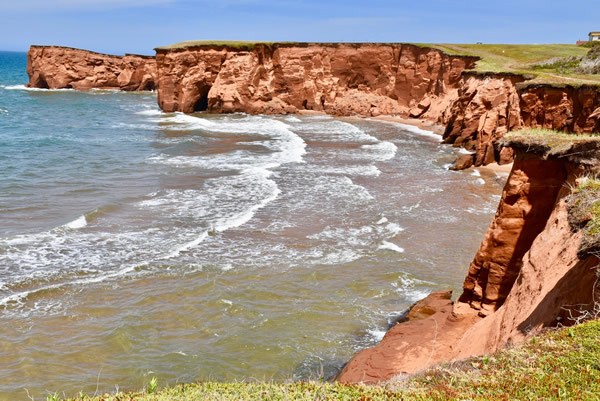 |
| All types of water sports and boating are possible along the spectacular coastline of the Magdalen Islands. |
The Magdalen Islands also offer winter fun: hiking, snowshoeing, ice fishing, cross-country skiing, and bird watching. The most exciting adventure on the Islands takes place between late February and early March when vast herds of harp seals give birth to their babies, called “whitecoats” on the ice floes around the Islands. There are helicopter rides over the frozen St. Lawrence Gulf to watch the hordes of seals. In the same period, Carnival and Mid-Lent are also celebrated. Especially the "Mi-Careme of Fatima", a sort of French-Canadian trick or treat for all ages, a famous yearly festival.
More Info
The summer season runs from early June to late September. During this period, most cultural activities (music, theatre, museums, workshops, activities for kids) take place. Cafés, restaurants, B&Bs, museums, galleries, and other venues are open daily (check out the website for Tourist Office of "Les Isles de la Madeleine").
The Islands can be reached by plane from Québec, Montreal, and Gaspé; by ferry from Prince Edward Island (Souris); and by cruise ship from Montreal.
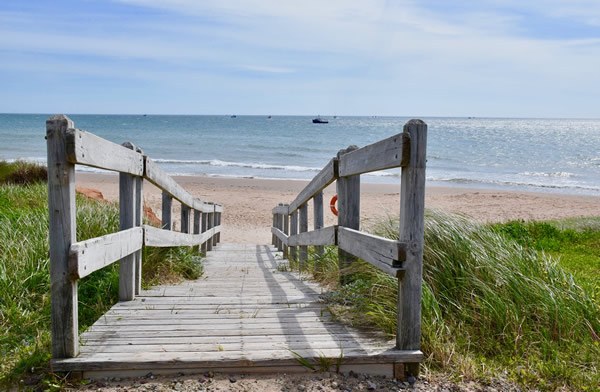 |
| Towards the beach of "Dune du Sud." |
Lies Ouwerkerk is originally from Amsterdam, The Netherlands, and currently lives in Montreal, Canada. Previously a columnist for The Sherbrooke Record, she is presently a freelance writer and photographer for various travel magazines.
|
